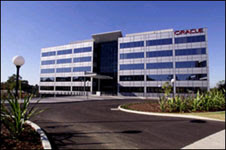In my experience, having worked the tiles with Peoplesoft, SAP, Siebel and Documentum, the number 1 reason why things don't go as planned is the lack of involvement of the end-user community. However, there are a number of other reasons why projects fail.
What is Success? Well, the dictionary defines success as "The achievement of something desired, planned or attempted". Well, in my terms this translates to an IT definition of "Implementing a technical solution that your end-users do NOT reject".
Having worked as a consultant, specifically working with customers who have had some issues with their implementations, the following summarises the reasons that businesses state why their projects failed.
- The technical solution was too difficult to implement
- The software didn't live up to the sales-persons promises
- The project ran out of money
- The business executive changed their minds or reset priorities
- The implementation team, didn't!
#6 Poor system, integration or end-user testing
#5 No change control system
#4 Scope creep
#3 Poor or no requirements
#2 Long or unrealistic project timeframes
#1 Lack of end-user involvement in the project
....and as a balance to this, also states the reasons why projects succeed.
#6 Open Communications
#5 Technical competence and maturity of implementation partner
#4 Structured project management
#3 Developer has understanding of the clients business (implementation partner)
#2 End user participation
#1 High level executive sponsorship
If you are entering into a new implementation of almost any technology, there are some key drivers that you should definitely consider. Firstly, remember that the end-users are always right - these are the people who most need influencing that your solution is right for them and meets their every need. Ensure that the project has high-level executive sponsorship so that the entire business buys into the solution and looks to adopt it as an integral part of their daily lives. Obviously ensure that the project has budget - there's nothing worse than getting half-way through something and running out of cash! Choose the right implementation partner - one of "Paul's Rules" is that you invariably get what you pay for here - low-cost definitely does not equate to a successful project, but there again a high-cost doesn't either. Have your business requirements defined and agreed upon with the end-users up-front in the project lifecycle. Define your project success criteria as the #1 priority, closely followed by placing an order for the project t-shirts and identifying the project scape-goat. Form a team with the business, IT and your implementation partner. Review progress regularly, promote the project, celebrate success and communicate effectively.
Equally important is the choice of methodology to be followed by the project team. There are lots of methodology choices out there, I've followed most of them and been generally frustrated by all of them! At the very least, your project methodology checklist should include the following:
- Formal project scoping
- Business requirements
- Functional requirements
- Solution design
- Build
- Deploy/Roll-out
- Informative training for project team
- Formal product training
- End-user training (change-management)
- Structured project lifecycle
Scott Adams created a great cartoon that sums up a lot of business's approaches to the implementation of technology.
 To summarise, the most important thing to remember if you are looking to ensure success in your project is the establish what the business wants from the solution and then deliver!
To summarise, the most important thing to remember if you are looking to ensure success in your project is the establish what the business wants from the solution and then deliver!- Remember the Importance of your End-Users, Involve Them in the Project from Start to Finish
- Seek Executive Sponsorship and Market the Project Internally
- Allocate an Appropriate Budget, Software, Hardware, Services
- Select Your Implementation Partner Carefully and for the Right Reasons
- Define the Project Success Criteria as Your #1 Priority
- Form a Team with the Business, IT and your Implementation Partner
- Have Fun on the Project, Bond as a Team, Wear the Same Hats, Order T-Shirts
Paul








